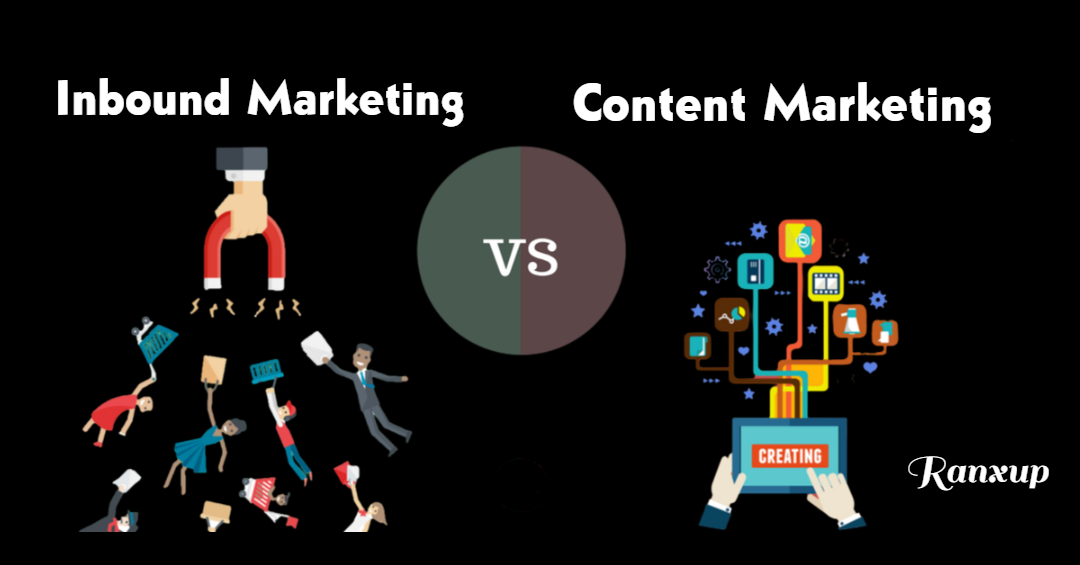In the ever-evolving world of digital marketing, two strategies have emerged as powerhouses: inbound marketing and content marketing. Although these terms are often used interchangeably, they are not necessarily the same. They represent two distinct approaches with unique objectives and tactics.
Inbound marketing and content marketing share a common goal: attracting and engaging a target audience. However, the strategies they employ to achieve this goal differ significantly. In this blog post, we will delve into the intricacies of inbound marketing and content marketing, exploring their similarities, and differences, and how they can be effectively integrated to create a holistic marketing approach.
So, if you’ve ever found yourself wondering about the distinctions between inbound marketing and content marketing, or if you’re looking to refine your marketing strategy, this blog post is for you. Let’s embark on a journey to unravel the dynamics of these two influential marketing techniques and discover how they can revolutionize your brand’s online presence.
Understanding Inbound Marketing
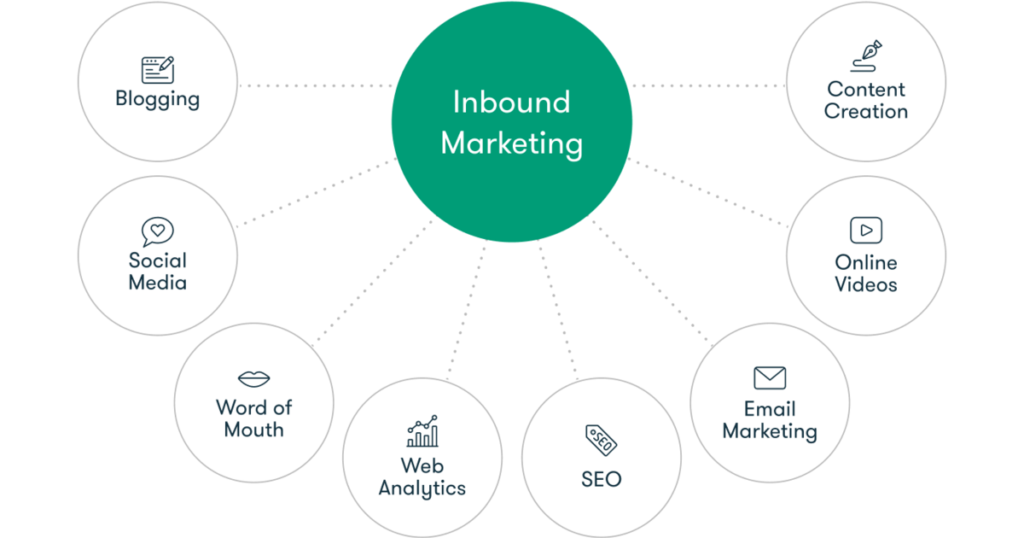
Inbound marketing is a customer-centric approach focusing on attracting and engaging potential customers through “meaningful and relevant content.”Unlike traditional outbound marketing, which relies on interruptive tactics like cold calls or mass advertising, inbound marketing aims to pull customers in by providing them with valuable information and resources. Here are some key points to help you understand the essence of inbound marketing:
- Customer-centric: Inbound marketing puts the customer at the center of the marketing strategy. It seeks to understand their needs, pain points, and preferences to create personalized and tailored experiences.
- Content creation: Inbound marketing relies heavily on creating high-quality, informative, and engaging content. This can take the form of blog posts, eBooks, videos, social media posts, and more. The goal is to provide value to the audience and establish your brand as a trusted authority in your industry.
- Attraction through SEO: Search Engine Optimization (SEO) is a crucial component of inbound marketing. By optimizing your content with relevant keywords, meta tags, and other SEO techniques, you can increase your visibility in search engine results and attract organic traffic to your website.
- Lead generation: Inbound marketing focuses on capturing leads and nurturing them through the buyer’s journey. Through techniques like gated content, email marketing, and lead magnets, you can collect valuable information from potential customers and guide them toward making a purchase.
- Relationship building: Inbound marketing isn’t just about getting customers; It’s about building lasting relationships. By providing ongoing value and personalized experiences, you can turn customers into brand advocates who will promote your business through word-of-mouth.
Exploring Content Marketing
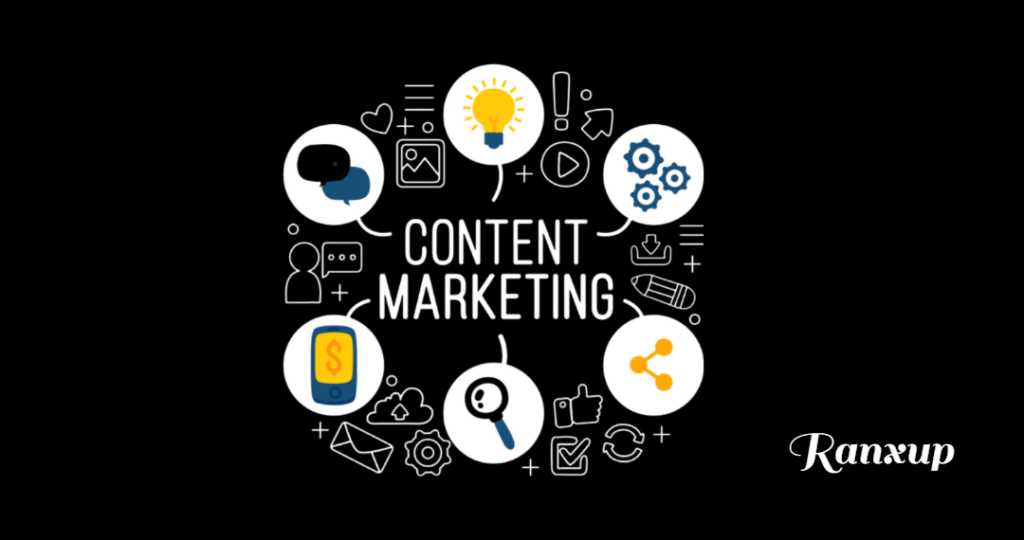
Content marketing has become a cornerstone of modern marketing strategies, providing businesses with a powerful tool to engage and connect with their target audience. Businesses can attract and retain customers by creating and distributing valuable, relevant, and consistent content, ultimately driving profitable action. Here are some key points to help you explore the world of content marketing:
- Valuable content creation: Content marketing revolves around creating content that resonates with your target audience. This can take many forms, such as blog posts, articles, videos, infographics, podcasts, etc. The key is to provide valuable information, insights, and solutions that address your audience’s pain points and interests.
- Building brand authority: Through content marketing, businesses can establish themselves as thought leaders and experts in their industry. By consistently delivering high-quality and informative content, you can build trust and credibility among your audience, positioning your brand as the go-to source for information and expertise.
- Tailoring content to the buyer’s journey: Content marketing is effective throughout the buyer’s journey, from awareness to consideration to decision. By creating content that aligns with each stage of the journey, you can nurture leads and guide them towards making informed purchasing decisions.
- Distribution and promotion: Creating great content is just one part of content marketing; distributing and promoting it effectively is equally important. Utilize various channels, such as social media, email marketing, guest blogging, and influencer partnerships, to amplify your content’s reach and engage with your target audience.
- Measuring success: Content marketing is not complete without measuring its impact and effectiveness. Use analytics tools to track key metrics, such as website traffic, engagement, conversions, and customer retention. This data will provide insights into what content is resonating with your audience and help you optimize your content marketing strategy.
Differentiating Inbound Marketing and Content Marketing
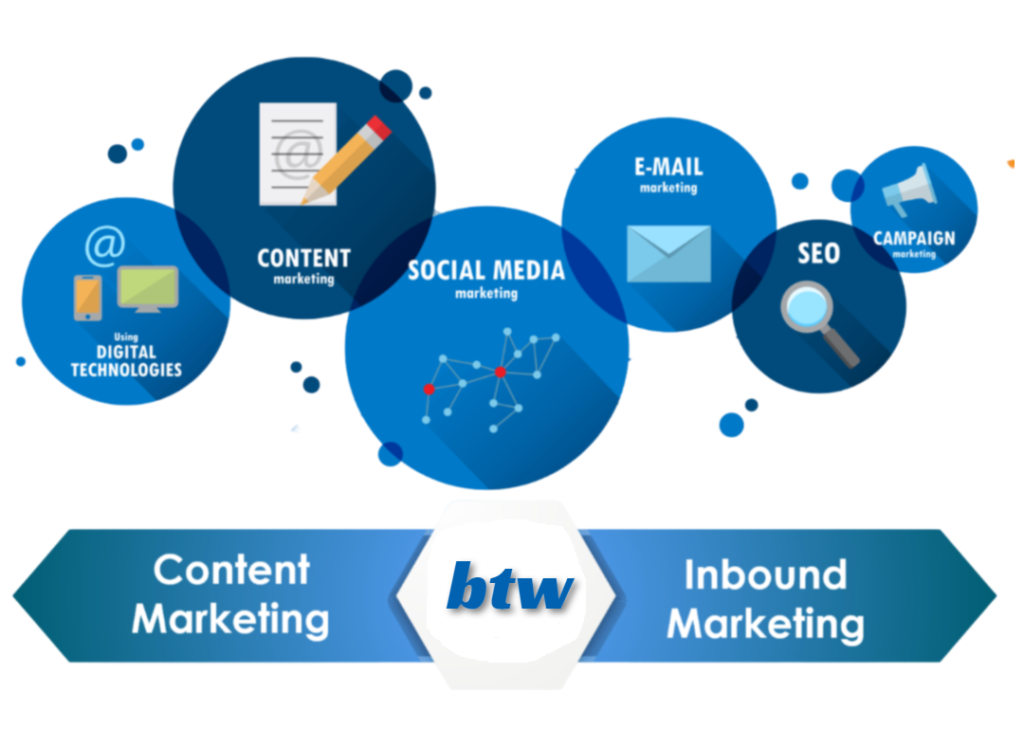
In the realm of digital marketing, inbound marketing, and content marketing are often used interchangeably. However, it is crucial to understand that while they share similarities, they are distinct strategies with different objectives and approaches. Let’s explore the key differences between inbound marketing and content marketing:
- Objectives: Inbound marketing aims to attract, engage, and delight potential customers by providing them with valuable content and personalized experiences. It focuses on building long-term relationships and nurturing leads through the customer journey. On the other hand, content marketing primarily focuses on creating and distributing relevant, informative, and engaging content to attract and retain a target audience.
- Scope: Inbound marketing encompasses a broader strategy that includes various tactics, such as content marketing, social media marketing, SEO, email marketing, and more. Content marketing, on the other hand, is a subset of inbound marketing and revolves primarily around the creation and distribution of content.
- Customer-centric approach: Inbound marketing places the customer at the center of the strategy, focusing on understanding their needs, preferences, and pain points. It aims to provide personalized experiences and tailored content that addresses specific customer needs. Content marketing, while also customer-centric, focuses more on creating valuable and relevant content that educates, entertains, or solves a problem.
- Lead generation: Inbound marketing emphasizes lead generation and nurturing. It utilizes various techniques, such as lead magnets, gated content, and email marketing, to capture leads and guide them through the customer journey. Content marketing, although it can contribute to lead generation, primarily focuses on creating content that attracts and engages the target audience.
- Integration: Inbound marketing and content marketing can work hand in hand to create a holistic marketing strategy. Content marketing plays a significant role in inbound marketing by providing the valuable content needed to attract and engage potential customers. However, inbound marketing extends beyond content creation, incorporating other tactics to optimize the customer experience and drive conversions.
Key Differences and Similarities of Inbound Marketing vs. Content Marketing:
While inbound marketing and content marketing are often used interchangeably, they are distinct strategies with their objectives and tactics. Understanding the differences and similarities between these two approaches is essential for crafting a comprehensive marketing strategy. Let’s explore the key differences and similarities between inbound marketing and content marketing:
Differences:
- Objectives: Inbound marketing focuses on attracting, engaging, and delighting potential customers throughout their buyer’s journey. It aims to build long-term relationships and nurture leads. Conversely, content marketing primarily focuses on creating and distributing valuable and relevant content to attract and retain a target audience.
- Scope: Inbound marketing encompasses a broader strategy that includes various tactics, such as content marketing, social media marketing, SEO, email marketing, and more. Content marketing, however, is a subset of inbound marketing and revolves primarily around the creation and distribution of content.
- Approach: Inbound marketing takes a customer-centric approach, focusing on understanding customer needs, preferences, and pain points. It aims to provide personalized experiences and tailored content. Content marketing, while still customer-centric, focuses more on creating valuable and relevant content that educates, entertains, or solves a problem.
Similarities:
Audience Engagement: Both inbound marketing and content marketing aim to attract and engage a target audience. They emphasize the importance of providing valuable and relevant content to capture attention and build trust.
- Value-driven: Inbound marketing and content marketing both prioritize delivering value to the audience. They focus on creating content that educates, entertains, or solves problems, rather than relying on interruptive or promotional tactics.
- Relationship Building: Both strategies recognize the significance of building long-term relationships with customers. By providing ongoing value and personalized experiences, they aim to establish trust and loyalty.
- Integration: Inbound marketing and content marketing can be integrated to create a comprehensive marketing strategy. Content marketing plays a crucial role in inbound marketing by providing the valuable content needed to attract and engage potential customers.
Benefits and Considerations of Inbound Marketing vs. Content Marketing:
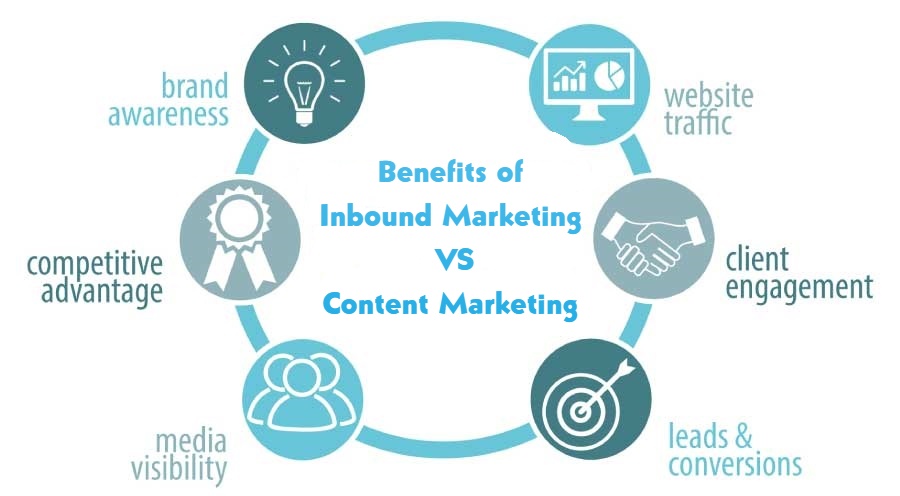
Benefits of Inbound Marketing:
- Targeted Audience Engagement: Inbound marketing allows you to attract and engage a specific target audience actively looking for the information or solution you provide. By understanding your audience’s needs and pain points, you can create personalized experiences that resonate with them.
- Long-term Relationship Building: Inbound marketing focuses on building long-term relationships with customers. By consistently providing value and addressing their needs, you can establish trust, and loyalty, and increase customer retention.
- Cost-effective: Inbound marketing can be more cost-effective compared to traditional outbound marketing. By leveraging content creation and distribution, social media, and SEO, you can attract organic traffic and reduce reliance on paid advertising.
- Measurable Results: Inbound marketing allows you to track and measure various metrics, such as website traffic, engagement, lead generation, and conversions. This data provides insights into the effectiveness of your strategies, helping you optimize and refine your marketing efforts.
Considerations of Inbound Marketing:
- Time and Patience: Inbound marketing requires time and patience to develop and nurture relationships with your audience. It may take time to see significant results, as building trust and loyalty is a gradual process.
- Resource Intensive: Inbound marketing requires dedicated resources for content creation, SEO optimization, social media management, and lead nurturing. It is important to allocate sufficient time, budget, and manpower to effectively implement inbound marketing strategies.
Benefits of Content Marketing:
- Increased Brand Awareness: Content marketing allows you to showcase your expertise and knowledge, positioning your brand as an authority in your industry. By consistently delivering valuable and relevant content, you can increase brand awareness and visibility.
- Engaging and Educating Customers: Content marketing provides an opportunity to educate and engage customers. By creating informative and entertaining content, you can address their pain point, answer their questions, and guide them through the buyer’s journey.
- SEO and Organic Traffic: Content marketing plays a crucial role in improving search engine rankings. By optimizing your content with relevant keywords, meta tags, and quality backlinks, you can attract organic traffic and increase your website’s visibility.
Considerations of Content Marketing:
- Content Creation and Distribution: Content marketing requires consistent creation and distribution of high-quality content across various platforms. It demands time, creativity, and resources to maintain a consistent content production schedule.
- Evolving Trends and Algorithms: Content marketing is subject to changes in algorithms and trends in the digital landscape. Staying updated and adapting to these changes is essential to ensure the effectiveness of your content marketing efforts.
Conclusion
Inbound marketing and content marketing are distinct strategies that work together to drive success in the digital marketing landscape. While inbound marketing focuses on attracting qualified leads and providing a great customer experience, content marketing plays a crucial role in capturing and qualifying leads through the creation and distribution of valuable content. By understanding the differences and leveraging the strengths of both strategies, businesses can create a holistic and effective marketing approach that resonates with their target audience and drives business growth.
FAQs
1. What is the difference between inbound marketing and content marketing?
A. Inbound marketing is a holistic approach that focuses on attracting qualified leads and providing a great customer experience, while content marketing is a strategy for creating and distributing important content to attract and engage the target audience. Content marketing is a subset of inbound marketing.
2. How do inbound marketing and content marketing work together?
A. Content marketing is a crucial tactic within the broader inbound marketing strategy. It helps capture and qualify leads by providing valuable content that resonates with the target audience.
3. What are the benefits of implementing inbound marketing and content marketing strategies?
A. Implementing these strategies can lead to increased conversions, improved customer retention rates, and established brand authority and thought leadership.
4. What are the challenges associated with implementing these strategies effectively?
A. Challenges include the need for a strategic framework, consistent content creation, and alignment with business goals and target audience needs.

